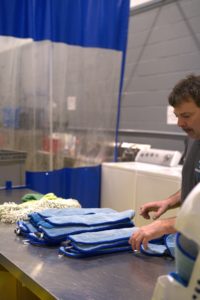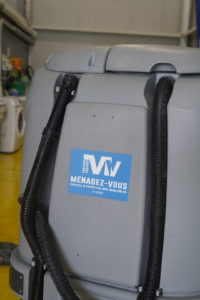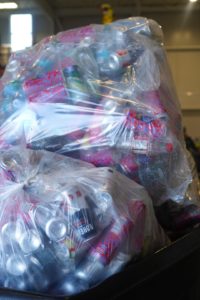In the commercial cleaning sector, every action counts. Our work directly impacts not only the quality of the environments where our clients operate, but also the health of our teams and the overall effect on ecosystems. Reducing our environmental footprint and ensuring the safety of our staff, who handle cleaning products every day, are therefore inseparable priorities. Here are the concrete actions we have implemented to achieve this:
1. Reduced Exposure to Chemicals
Employee safety is a top priority. We have replaced all traditional cleaning products with EcoLogo-certified ecological alternatives, significantly reducing the risks of irritation, allergic reactions, and long-term exposure to harmful substances.
This transition was carried out gradually to maintain effectiveness. Multiple products were tested to identify the most suitable formula for each cleaning need.
We continue this process with consumable supplies distributed at client sites, such as paper towels, hand soap, toilet paper, and feminine hygiene products.
📌 Also read: Eco-Friendly vs Traditional Cleaning Products: What Really Works?
2. Washing and Reuse of Cleaning Materials
All rags, mop heads, and other cleaning accessories are machine-washed after each use before being put back into service at our client sites. This method reduces waste and limits the environmental impact of overconsumption.
3. Reuse and Maintenance of Equipment
All our cleaning equipment—including garbage bins, carts, brooms, mops, scrubbers, and Zamboni machines—is labeled to prevent mix-ups with equipment already present at client sites. This allows us to efficiently reuse our equipment across multiple locations.
Our in-house technicians repair all types of equipment, reducing replacement costs and limiting overconsumption. Employees are trained to clean and maintain equipment after each use, helping prevent premature wear.
4. More Ergonomic Equipment
We prioritize lightweight, easy-to-handle tools, carts, lifts, and cleaning systems that require less physical effort. This helps prevent pain and fatigue among our staff.
5. Training and Best Practices
Our employees are trained in sustainable cleaning methods, the safe use of products and equipment, and responsible waste management—an increasingly essential skill in our industry.
📌 Also read: Exposure to Cleaning Products: What Are the Risks for Workers Who Use Them Daily?
Each service is adapted to client needs—for example, sorting recycling at events such as aluminum can collections. Internally, all computer equipment and batteries are delivered to proper recycling centers in compliance with Recyc-Québec guidelines.
Conclusion
Every day, we see the positive effects of sustainable cleaning practices on the safety and satisfaction of our staff. These measures show that efficiency, environmental responsibility, and employee well-being can go hand in hand.


